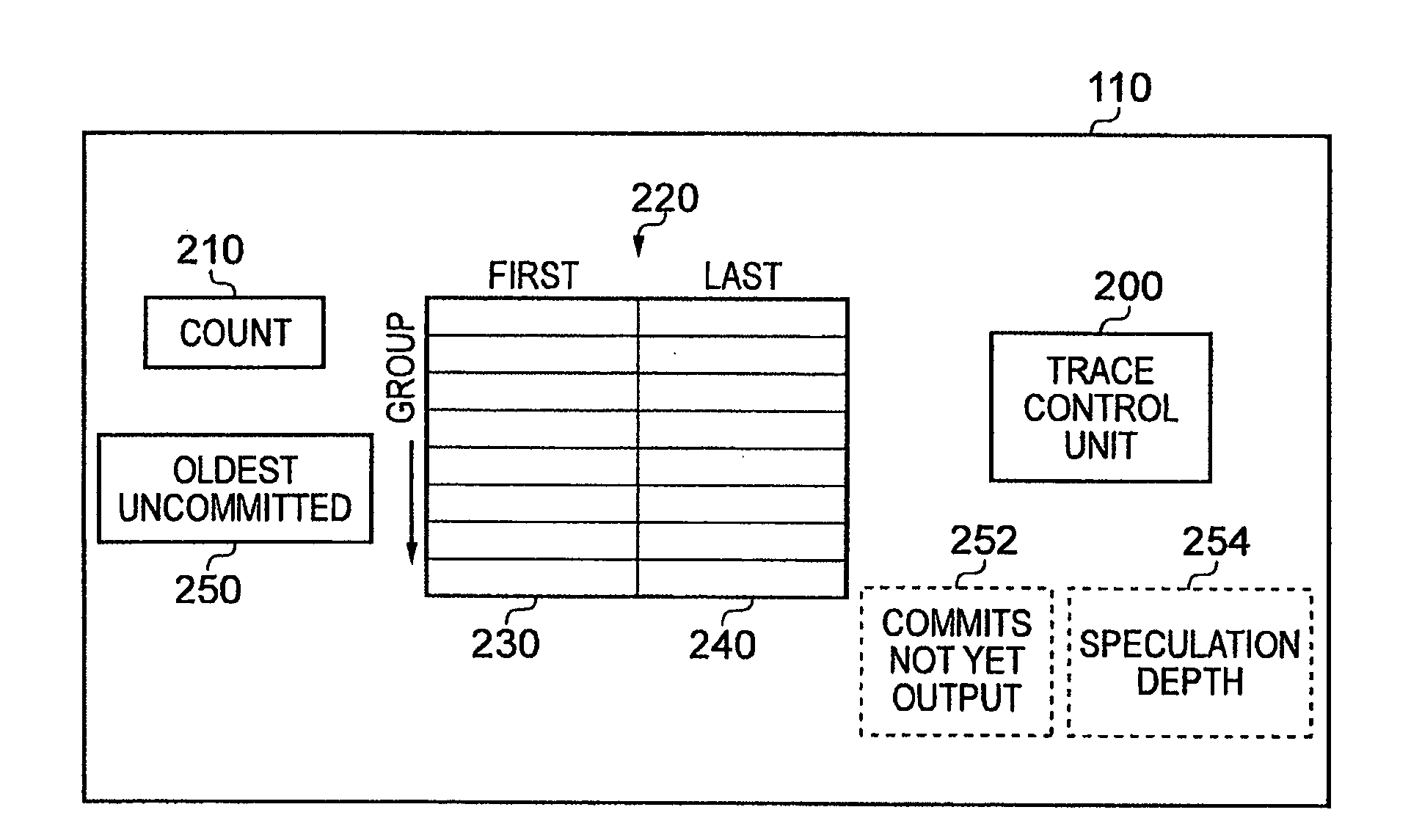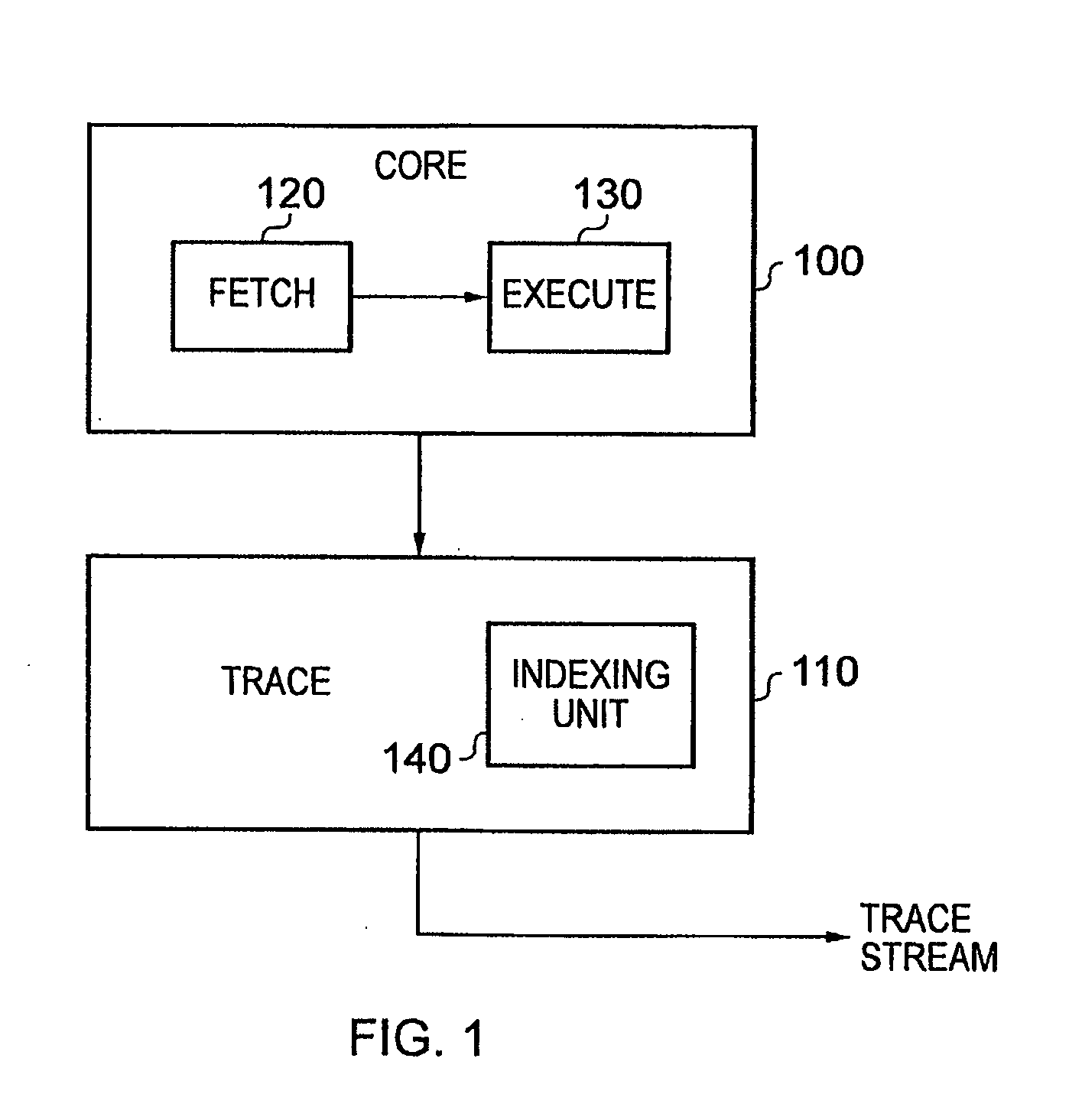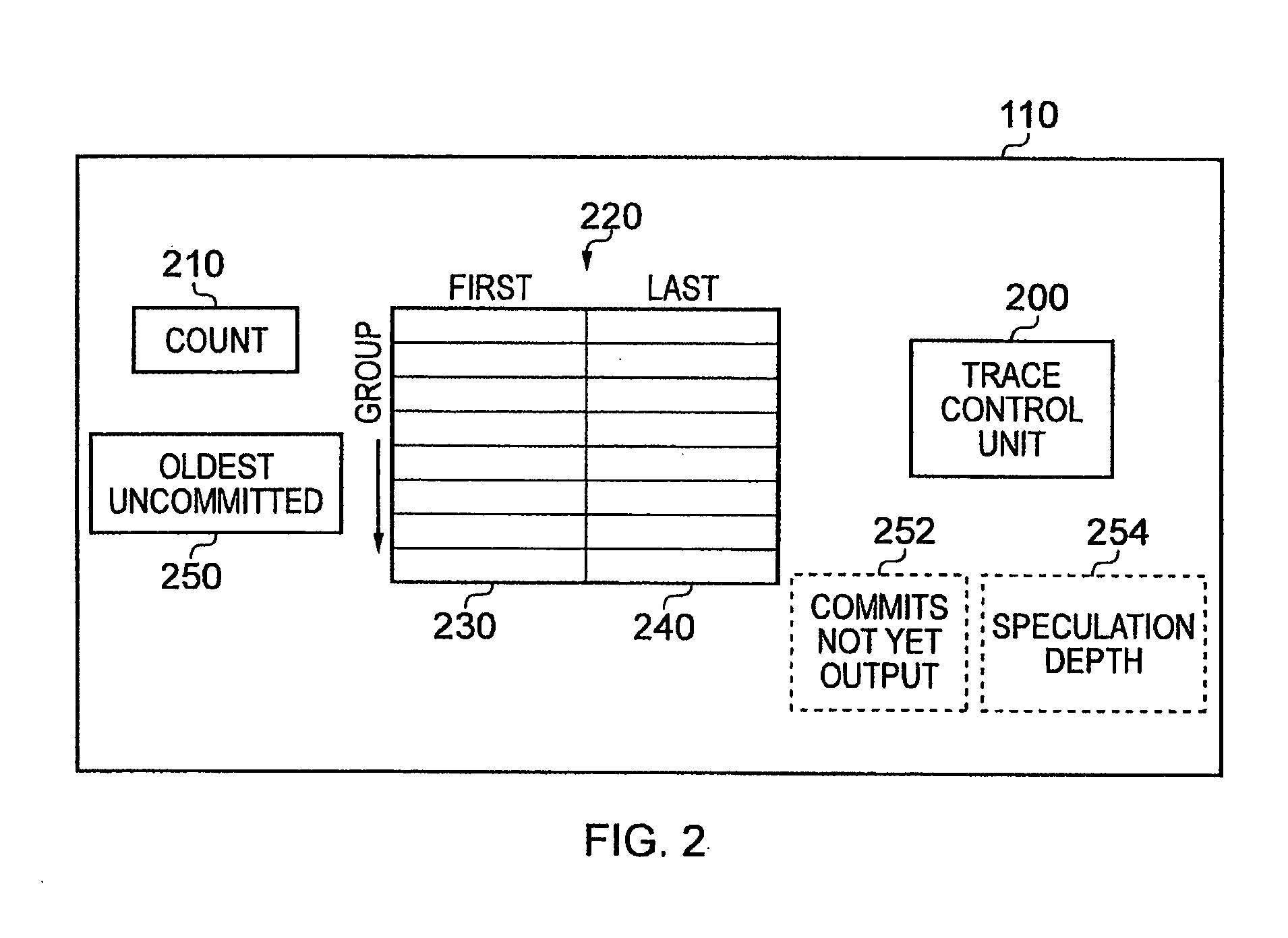Key allocation when tracing data processing systems
a data processing system and key allocation technology, applied in the field of monitoring the activities of data processing units, can solve the problems of complex and time-consuming task of programming and debugging the operation of such data processing apparatuses, and the associated activity of tracing the activity of data processing apparatuses, and achieve the effect of valuing the trace bandwidth
- Summary
- Abstract
- Description
- Claims
- Application Information
AI Technical Summary
Benefits of technology
Problems solved by technology
Method used
Image
Examples
Embodiment Construction
[0072]FIG. 1 schematically illustrates a data processing system including a trace unit according to the present invention. The data processing system comprises processor core 100 (a data processing unit) and trace unit 110, configured to monitor the processing activities of processor core 100 and to generate items of trace data (as a trace stream) indicative of the processing activities of the core. The processor core 100 comprises a fetch unit 120 and an execute unit 130. The fetch unit 120 fetches instructions from memory (not illustrated) and passes them to execution unit 130 for execution. In particular, processor core 100 is a speculative and out-of-order processor, and hence fetch unit 120 is configured to fetch instructions for the execute unit 130 which are predicted (though not guaranteed) to be required. Execute unit 130 will speculatively execute these instructions, later cancelling or committing them when it is known whether that speculatively executed instruction should...
PUM
 Login to View More
Login to View More Abstract
Description
Claims
Application Information
 Login to View More
Login to View More - R&D
- Intellectual Property
- Life Sciences
- Materials
- Tech Scout
- Unparalleled Data Quality
- Higher Quality Content
- 60% Fewer Hallucinations
Browse by: Latest US Patents, China's latest patents, Technical Efficacy Thesaurus, Application Domain, Technology Topic, Popular Technical Reports.
© 2025 PatSnap. All rights reserved.Legal|Privacy policy|Modern Slavery Act Transparency Statement|Sitemap|About US| Contact US: help@patsnap.com



